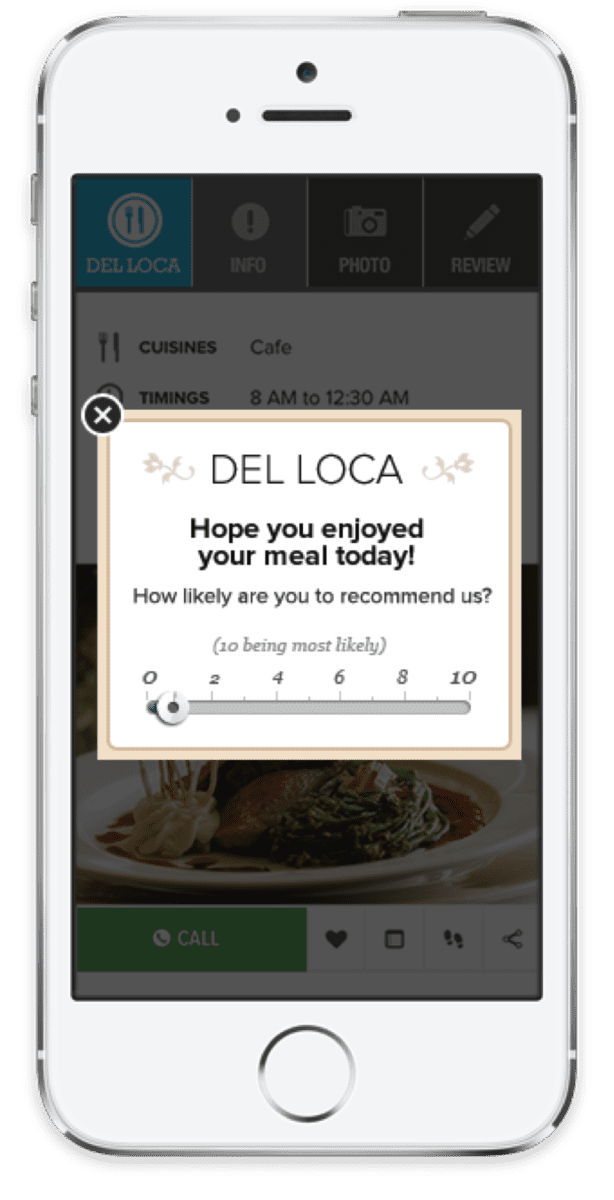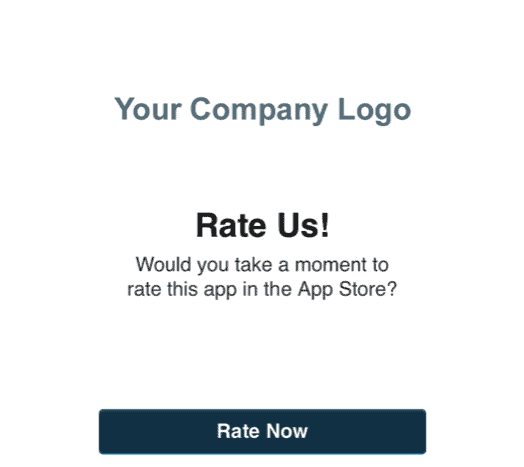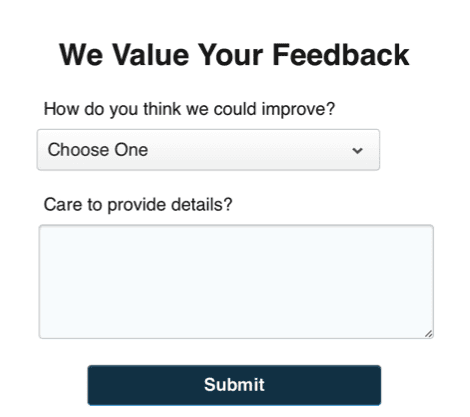Pleasing the greatest number of your app users possible and moving to the top of app store lists is no easy feat, but with in-app messaging and Net Promoter Score (NPS) campaigns, you can create a winning combination of increased app ratings and improved user happiness.
What Is an NPS Survey?
NPS is a metric pioneered in the early 2000’s by Fred Reichheld that enables companies to gauge customer loyalty. Basically, the survey asks you to rate your experience on a scale of 1-10. Promoters are considered those who rated the experience at a 9 or above. Detractors are those who rated their experience at a 6 or below.
With in-app messaging, you can set up an NPS campaign to collect survey responses around this metric and use this data to drive future marketing campaigns. In this post we’ll show you how to use NPS to improve your App Store Rating while also improving the experience for unsatisfied users.
Here’s a quick example of an in-app NPS survey:
We wrote out step-by-step instructions on how to create an NPS survey using Localytics for your app in a previous post, but you can use similar in-app messaging tools to achieve the same thing. Read on to see how running one can boost your all store rating & help increase the happiness of your users!
Using NPS to Boost Your App Store Rating
Cutting through the clutter of hundreds of thousands of apps in both the iOS and Android app stores is challenging. Most users rely on ratings to indicate the best apps, so to be taken seriously, you need to rank highly in the app store. In an older post, we showed you how to improve your app store ranking.
The goal of apps should be to secure as many 5-star ratings from users as possible. An NPS campaign is a great way to discover which users are more likely to give your app the high praise you desire.
The concept is simple. By prompting users with an in-app message NPS survey, you can filter your promoters and detractors, then direct these users to independent actions. In the above example, if a user says they are very likely to recommend the app (a score of 8 or above), you can immediately follow up the survey with another in-app message asking if the user would mind rating the app in the app store.
Chances are, if the user agrees, they’ll give your app a 4 or 5 star review.
Using NPS to Make Users Happier
What happens if the user is very unlikely to recommend your app (a score of 3 or below on the NPS survey)? Instead of asking these “detractors” to rate your app in the store like your promoters, you have the opportunity to collect feedback about their experience.
By following up the survey with another message asking for feedback, you both avoid pushing unsatisfied users to rate your app with one or two stars in the store, and also capitalize on the opportunity to hear the honest truth about what falls short in your app from those with strong opinions.
This tactic makes your “unhappy” users feel heard, and as a result, can improve their opinions towards your app or brand.
It’s the same idea businesses have used for decades with complaint cards, “how’s my driving” stickers, etc. Expressing dissatisfaction is not only therapeutic for users, but it also grants the opportunity to engage them and change opinion.
Using NPS to Build Custom Dimensions
Collecting feedback is just the beginning, too. Using an app analytics solution, you can create a custom dimension of users based on their NPS score. Here’s more on custom dimensions if you aren’t familiar with them!
Though boosting your app store rating is a great way to see immediate results, the real value comes from turning NPS results into these custom dimensions. By grouping users, you can build personalized experiences for detractors, promoters, and neutral voters.
Knowing your advocates means you can call on those users to share your content, become early adopters of new features, and spend more time or money in your app. You can avoid further alienating those who scored low on your NPS survey. Then, you can continue to monitor user behavior and nurture a positive experience for them.
Over time, by pointing out updates to pain-point features and offering app marketing incentives, you can change opinions for these detractors. Later, you can release a new NPS survey and note how sentiment has improved!
Key Takeaways
- In-App messaging is a powerful resource for encouraging specific user behaviors.
- By crafting an NPS survey via an in-app message, you can satisfy two very important goals: improving your app store rating and increasing user happiness.
For the time investment, there are few app marketing practices that can have such a positive impact.




